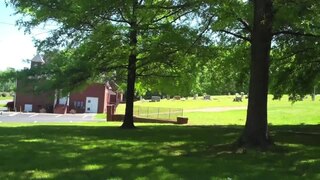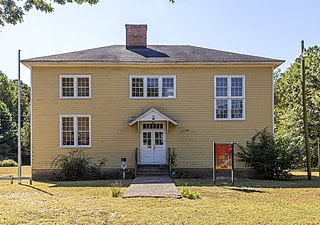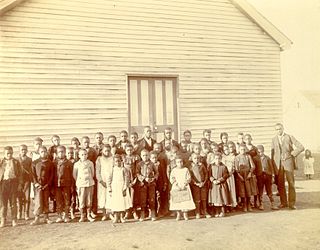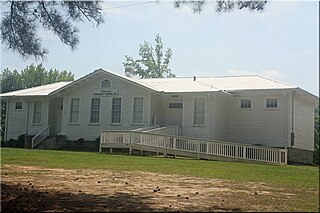
Pomaria is a town in Newberry County, South Carolina, United States. The population was 179 at the 2010 census.

The Rosenwald School project built more than 5,000 schools, shops, and teacher homes in the United States primarily for the education of African-American children in the South during the early 20th century. The project was the product of the partnership of Julius Rosenwald, a Jewish-American clothier who became part-owner and president of Sears, Roebuck and Company and the African-American leader, educator, and philanthropist Booker T. Washington, who was president of the Tuskegee Institute.
Hope School may refer to:

James Haskell Hope was the longest-serving Superintendent of Education in the state of South Carolina, from 1922 until 1945.
Thurman Ruth, who got his start in vaudeville in 1927, was a gospel singer, deejay and concert promoter, and a forefather of such rhythm and blues (R&B) producers as Ralph Bass. Ruth had organized the Selah Jubilee Singers, a gospel group drawn from the membership of a church choir, leaving it in 1949 to pursue more secular interests in music.

San Domingo School, also known as Sharptown Colored School and Prince Hall Masons Unity Lodge No. 73, is a historic Rosenwald School building located at Sharptown, Wicomico County, Maryland. It was built in 1919, and is a two-story, rectangular frame building with a hipped roof. It is one of four surviving Rosenwald schools in Wicomico County. The school had only four teachers and remained in use as a school until 1957.

This is a list of the National Register of Historic Places listings in Newberry County, South Carolina.

Liberty Colored High School is a former high school for African-American students in Liberty, South Carolina during the period of racial segregation. It originally was called Liberty Colored Junior High School. The building is now a community center known as the Rosewood Center. It is at East Main Street and Rosewood Street in Liberty. The school was built in 1937 on the site of a Rosenwald school that had burned down.

The Tankersley Rosenwald School, also known as the Tankersley Elementary School, is a historic American Craftsman-style school building in Hope Hull, Alabama, a suburb of Montgomery. This Rosenwald School building was built in 1922 to serve the local African American community. The money to build the school was provided, in part, by the Julius Rosenwald Fund. It was added to the Alabama Register of Landmarks and Heritage on June 26, 2003, and to the National Register of Historic Places as a part of The Rosenwald School Building Fund and Associated Buildings Multiple Property Submission on January 22, 2009.

St. John Lutheran Church is a historic Lutheran congregation in Pomaria, South Carolina affiliated with the Evangelical Lutheran Church in America. It was listed on the National Register of Historic Places in 1978.
Guildfield Missionary Baptist Church is a historic African-American church on Guildfield Church Road in South Guthrie, Tennessee.
Samuel L. Smith was a school administrator and practical architect involved in school design for Rosenwald Schools.

Cadentown School in Lexington, Kentucky was a primary public school for black children in the segregated Fayette County Public Schools from about 1879 to 1922. The building that originally housed Cadentown School, located at 705 Caden Lane, is no longer extant. However, the Rosenwald Fund School is listed on the National Register of Historic Places in Fayette County.

Folk-Holloway House is a historic home located at Pomaria, Newberry County, South Carolina. It was built about 1835, and is a two-story, single pile frame I-house. It features a recessed front porch deck and freestanding columns. The house reflects Federal and Greek Revival style design elements.

Hatton House, also known as the 1892 House, is a historic home located at Pomaria, Newberry County, South Carolina. It was built about 1892, and is a two-story, frame gabled-ell cottage in a vernacular late-Italianate style. It features ornate brackets and other exterior decorative trim.

Pomaria, also known as the Summer–Huggins House, is a historic plantation house located near Pomaria, Newberry County, South Carolina. It was built about 1825, and is a two-story, frame dwelling on a raised basement with Greek Revival and Federal style design elements. It features a two-story, projecting pedimented portico. Also on the property are the contributing log smokehouse, a board and batten privy, and a Carpenter Gothic post office, which served as the first post office in the Dutch Fork. Pomaria Nurseries were begun on the plantation in 1840.

Hannah Rosenwald School is a historic Rosenwald school located near Newberry, Newberry County, South Carolina. It was built in 1924–1925, and is a one-story, frame, three-teacher type school. The school included three classrooms, three cloakrooms, an industrial room, and an entry hall. The school was affiliated with the Hannah A.M.E. Church and closed in the 1960s.

Howard Junior High School, also known as Prosperity School, Shiloh School, and Shiloh Rosenwald School, is a historic Rosenwald school located at Prosperity, Newberry County, South Carolina. It was built in 1924–1925, and is a one-story, frame, double-pile, rectangular building on an open brick pier foundation. It originally had four classrooms; two additional classrooms were added in the 1930s.

The Concord School, currently called the Concord Community Center, is a historic Rosenwald School located at 645 Walter Grissom Road between Kittrell and Franklinton in northwestern Franklin County, North Carolina. Built in 1922 and primarily financed by the Julius Rosenwald Foundation, the school is a single story, hip-roofed frame building which consisted of three classrooms, a three-bay industrial room and a cloakroom. The Concord School served African-American students within the local community until it closed in 1955. Students were then moved to the B.F. Person School in nearby Franklinton.



















